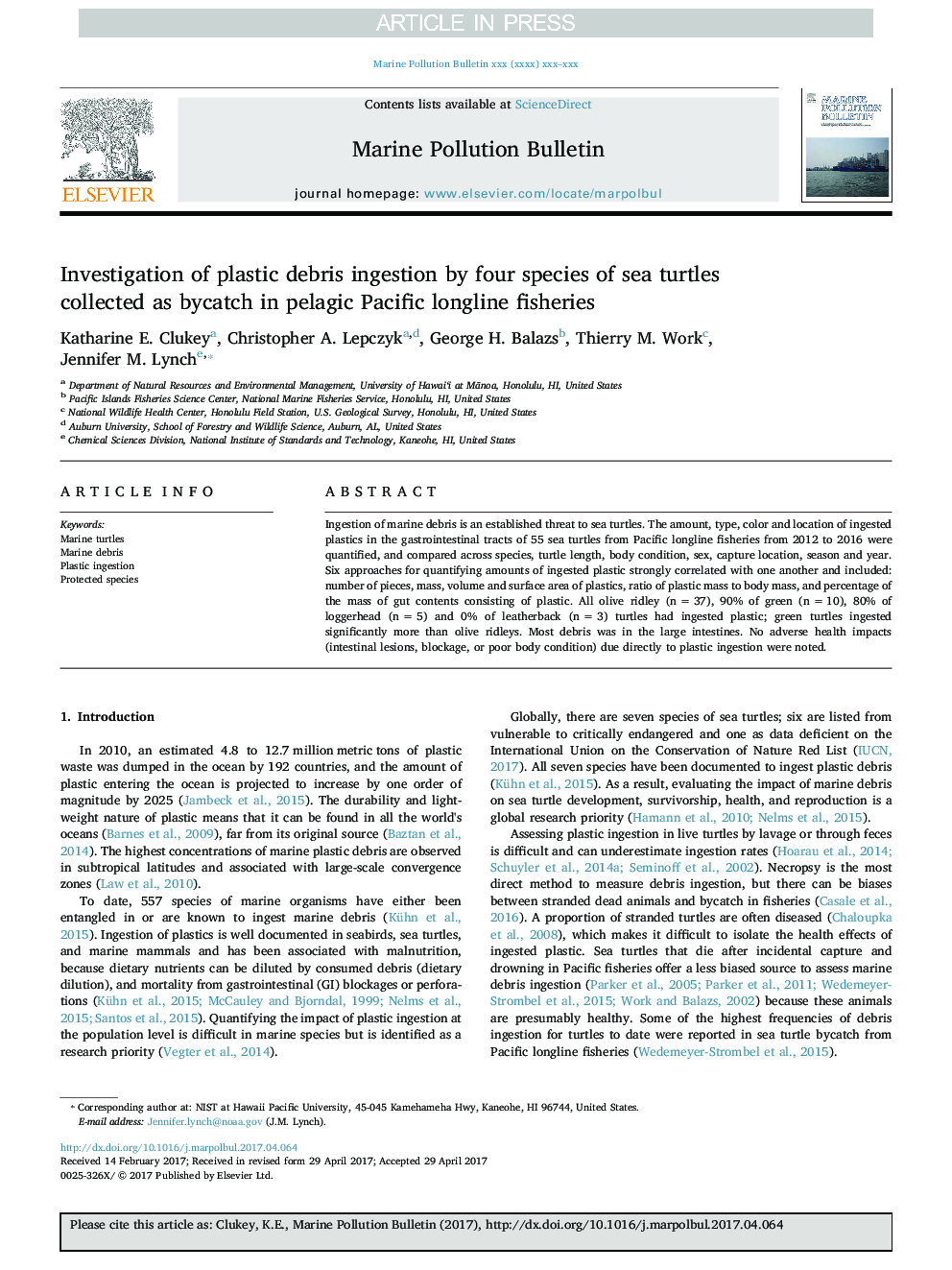| Article ID | Journal | Published Year | Pages | File Type |
|---|---|---|---|---|
| 5757654 | Marine Pollution Bulletin | 2017 | 9 Pages |
Abstract
Ingestion of marine debris is an established threat to sea turtles. The amount, type, color and location of ingested plastics in the gastrointestinal tracts of 55 sea turtles from Pacific longline fisheries from 2012 to 2016 were quantified, and compared across species, turtle length, body condition, sex, capture location, season and year. Six approaches for quantifying amounts of ingested plastic strongly correlated with one another and included: number of pieces, mass, volume and surface area of plastics, ratio of plastic mass to body mass, and percentage of the mass of gut contents consisting of plastic. All olive ridley (n = 37), 90% of green (n = 10), 80% of loggerhead (n = 5) and 0% of leatherback (n = 3) turtles had ingested plastic; green turtles ingested significantly more than olive ridleys. Most debris was in the large intestines. No adverse health impacts (intestinal lesions, blockage, or poor body condition) due directly to plastic ingestion were noted.
Related Topics
Physical Sciences and Engineering
Earth and Planetary Sciences
Oceanography
Authors
Katharine E. Clukey, Christopher A. Lepczyk, George H. Balazs, Thierry M. Work, Jennifer M. Lynch,
